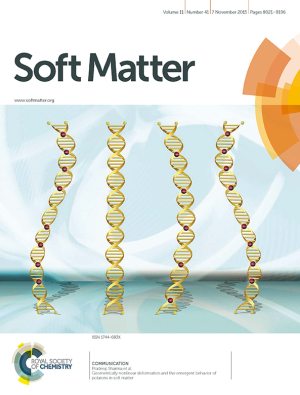The November inside cover of the journal Soft Matter features research conducted by Pradeep Sharma, professor and chair of the mechanical engineering department at the UH Cullen College of Engineering, his doctoral student Xiaobao Li and his collaborator Liping Liu of Rutgers University.
Under the umbrella of a three-year National Science Foundation grant, they discovered that altering the quantum field of soft nanostructures could cause significant mechanical deformation.
“It’s somewhat gratifying that our research is what the editor decided to highlight,” Sharma said.
For many years, material scientists have applied mechanical strain to semiconductors to tailor electronic properties for specific purposes. However, most of them did not appreciate that the opposite also holds true – until recently. Research conducted by Sharma’s group has shown that this phenomenon is prominent in certain soft nanostructures where very large mechanical strains are achievable.
“So this is relatively new and interesting work, but most importantly we took into account aspects of the phenomenon that no one had ever thought of,” Sharma said. “We’re now trying to understand the ramifications of this fundamental scientific discovery.”
Slight changes to the quantum fields of soft semiconductors, such as polymers, DNA and RNA, can cause drastic mechanical deformations. For example, simply shining light from a distance of a soft nanostructure could activate desired mechanical motion.
“Imagine that I shine a light on a Coke can, and it starts twisting, bending or stretching,” Sharma said. “That’s what we’re talking about in the case of DNA, for example.”
The discovery can lead to an enhanced understanding of the charge transport mechanism in DNA, a fundamental scientific question that remains unanswered, as well as to advanced sensor and actuator technologies.
“Being able to remotely trigger something far away would be an asset in the creation of future devices,” Sharma said. “Our work caught the eye of the reviewers and editors, so I’m hoping it will be both useful and well-regarded.”
